How can a failed attempt at a record be considered a success? Steve Bate shows how a struggle can offer an alternative perspective.

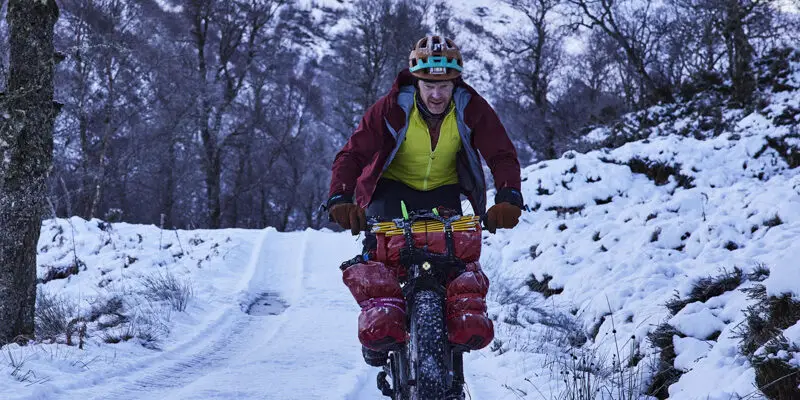
- Words Steve Bate
- Photography Paudie Spillane
Who is Steve Bate?
After being diagnosed with the degenerative eye condition retinitis pigmentosis, Steve Bate MBE, to give him his proper title, had to rethink his plans for becoming a mountain guide. After a solo climb of Yosemite’s El Capitan that proved to himself that his tunnel vision need not hold him back, he turned his focus to cycling. Here he has become a gold medal-winning Paralympian and world champion, racing on a tandem. He’s also too modest to write his own bio, so let us also add here that he’s a nice guy who’s fun to ride with and always has a supportive word when you’re flagging. His tattoo collection is impressive.
Leaning against the fence, my stomach filled with butterflies, I wonder again what this adventure has in store. It’s mid-December and sitting over Scotland is a band of high pressure that’s unwilling to shift, like a tired dog warmed by the glow of a fireplace. It’s pitch black except for the shafts of light that fall from street lamps, but I know the sky is clear. If it wasn’t for my poor eyesight I could see stars twinkling high above me, but the urge to gaze up trying to spot them left me years ago. I wait for my tracker – blinking lights let me know I’m almost live, with my position shared via satellites high above me in the universe. The thought makes me feel so very small. I wonder how many people will follow this dot, how many will laugh when I fail and how small a group will worry when I stop to rest? The unit gains the GPS lock I’ve paused for, the flashing light holding solid green. I know it’s time… After months of planning, I take a deep breath, cold air burns my throat, fills my lungs, and a large white cloud fills the morning sky as I exhale. I hear the familiar beep from my Garmin as I press start, and I leave the safety of the fence to embark on an adventure. An adventure with an unknown outcome, my favourite kind.
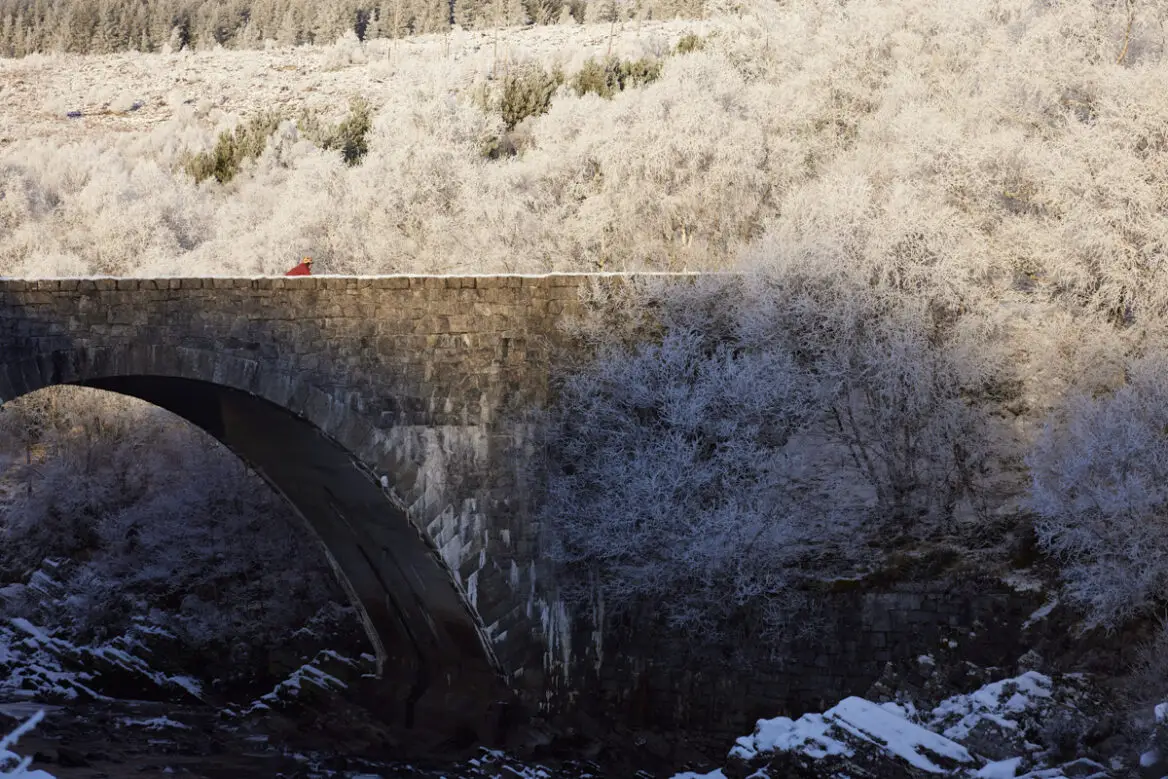
Grand plans
Months before that moment, I was inspired to ride the Highland Trail 550 in winter conditions. An old dream reignited by a young woman named Annie Lloyd Evans. Annie, an adventure cyclist, had not only won the women’s race of the HT550 in summer, but then returned a few months later to complete a winter round. Taking just over seven days, Annie broke the myth that the trail couldn’t be completed in winter. As I followed her adventure, that small spark inside me took to the tinder and the flames of adventure overcame my every thought. I had spoken to Ibrahim Park, my good friend and partner in adventure crime, years before when the race had made a name for itself early on. It quickly acquired a reputation as being one of the hardest independent time trials in the UK. Although our small island doesn’t have the sheer vast scale of other nations, its terrain and weather punches well above its weight when it comes to adventurous riding. Ibrahim and I talked about becoming the first people to complete the route in winter, but each year we found adventures that needed less commitment to take part in and never invested the hours of time needed to prepare.
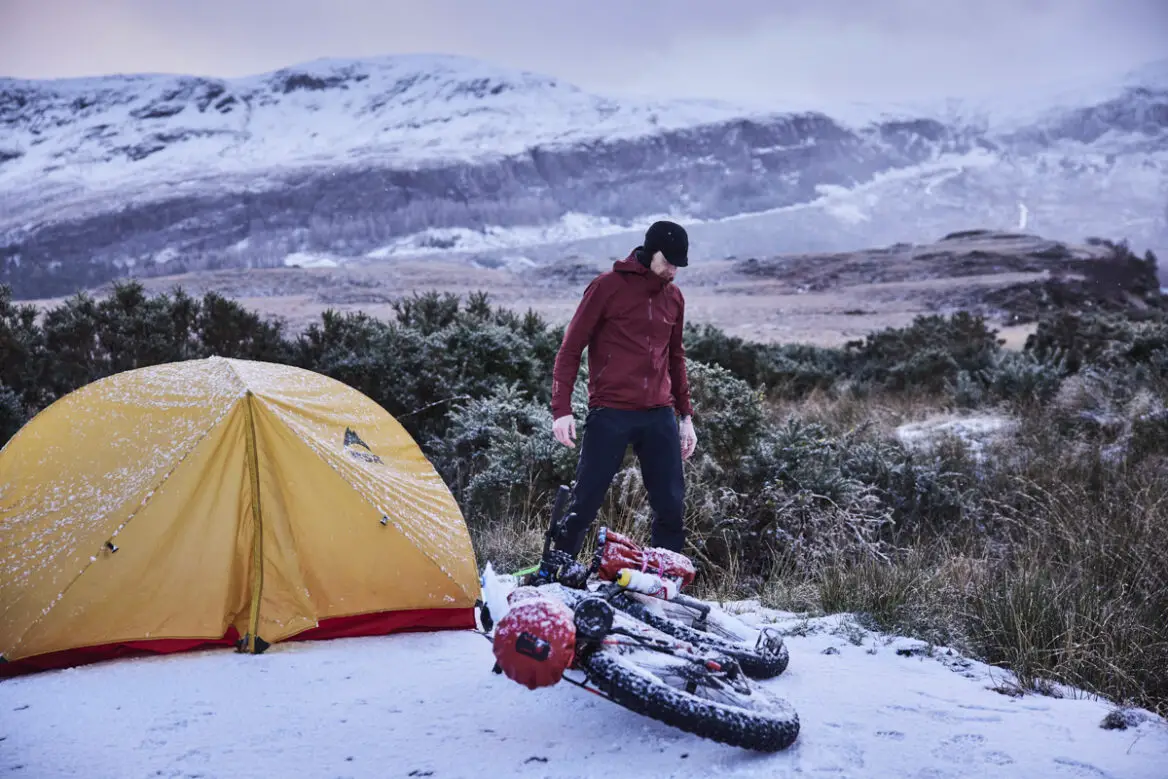
With Annie’s ride as a benchmark, I started my research. I didn’t know the route at all, although having lived in the north of Scotland for ten years I knew the area reasonably well. After gaining the GPX file from the route’s creator, a kind soul by the name of Alan Goldsmith, I began to study sections of the route. My plan was to complete it in sub-seven days, so I divided up the length of the route, giving me daily distances. I had no idea if each was possible given the varied terrain you encounter, conditions, riding a loaded fat bike, and most of all, the hours of darkness. It boiled down to six stages of one hundred miles, give or take. Yet this was just the beginning, and the deeper I delved, the more intimidating the ride became.
I pestered friends who had raced the route in summer – gleaning information from their experience, yet taking it with a pinch of salt. My winter attempt was a very different and serious undertaking. With no grand depart, there would be no other racers on the trail. The majority of shops, hotels and B&Bs in the Highlands shut their doors for the deep winter months. I was gearing up for a lonely time; with Ibrahim ruled out of action because of work, I was going after this solo. For several weeks over the summer I was lost in gear selection and maps. I spent hours hunting the web for random, tucked away shops and their opening hours, working these into my route plan, having a guess as to whether I would pass when an ‘Open’ sign hung in their sleepy windows. All the time I was making my plans, I was distracting myself from overwhelming doubt, knowing I would somehow have to manage this alone. This self-doubt began to build even greater when sponsors Salsa Cycles and 45NRTH agreed to put forward a budget to have the ride documented by film and photography. I’m fortunate to have several sponsors. Having worked for most for many years, I often wonder what I really have to offer; I’m just a normal bloke, doing normal things. Except when I do extreme things, I suppose.
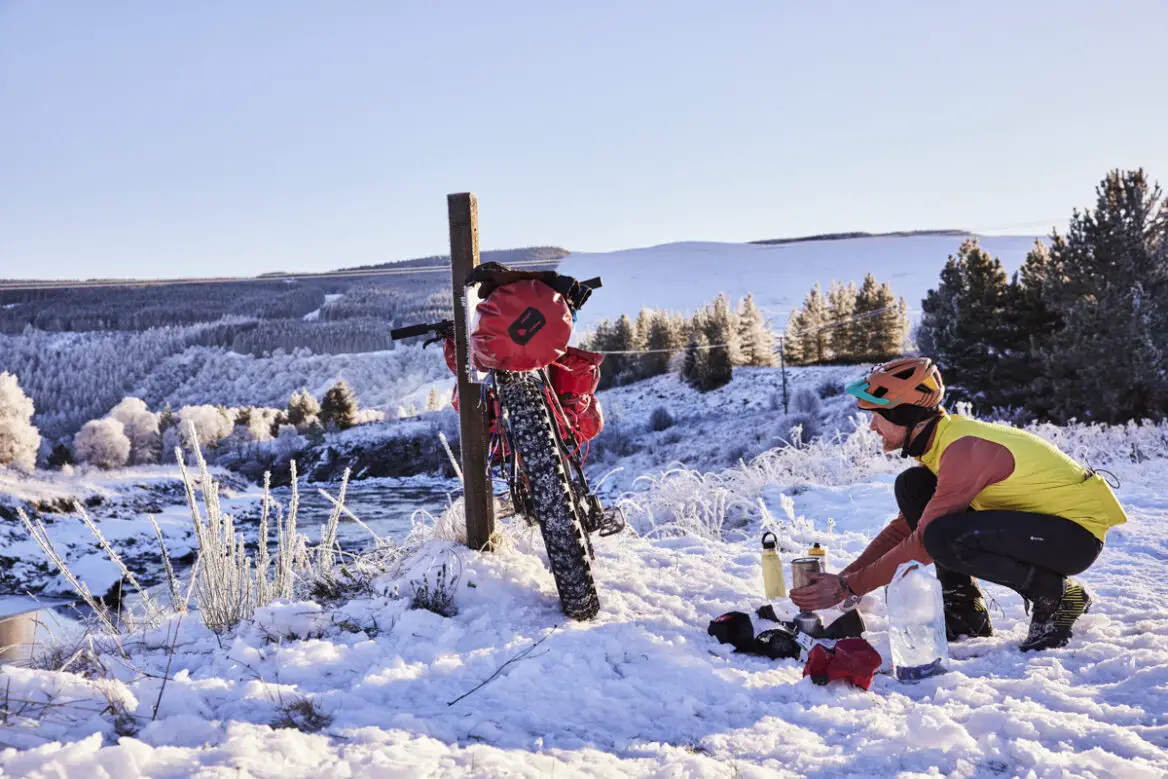
Embrace the suffering
Why do I choose to do these adventures and why do I find extreme challenge to be the most rewarding? Some of you may ask ‘Why do that to yourself?’. My first passion in life was rock climbing, and I didn’t discover that until my mid-twenties. For years I wanted to invest heavily in something, but never found anything that clicked. My passion for climbing, which almost became an obsession, taught me one thing that I’m extremely grateful for, and that is the value of suffering. From early on during those days of gaining experience, climbing harder and harder routes, it was clear my love for climbing was very much retrospective. Often during climbs I would be terrified and not enjoying the moment, yet pulling over the summit or standing on a ledge at the end of a pitch, I felt overwhelming pride in what I had achieved, and couldn’t wait to go through the process again. This early lesson in Type 2 fun taught me that it’s OK to be uncomfortable during an activity, because the reward at the end is always much greater. Leo Houlding, one of our country’s best climbers, has a great saying when the going gets tough: “If it was easy, it wouldn’t be hard!”
This simple concept has opened my mind to the value of hardship. I find it’s where I learn the most about myself as a person and who I really am. Over the years I’ve sought out that voice in my head, the doubt in my mind that speaks to me when the going gets hard. I’m sure we all have this voice – it’s the one that tells us ‘it’s OK, you can stop’. It reasons all the pain and suffering will cease if we just quit now. It is the voice of reason – a voice that protects us, but also holds us back from achieving our potential. For years I have pushed mind and body hoping this voice will appear and speak to me, because that’s the point when I know my adventure really begins.
As I pressed ‘Start’ on my Garmin, the voice was quiet. I was confident of the ride ahead, and rode out feeling sure I had what it would take to complete the route.
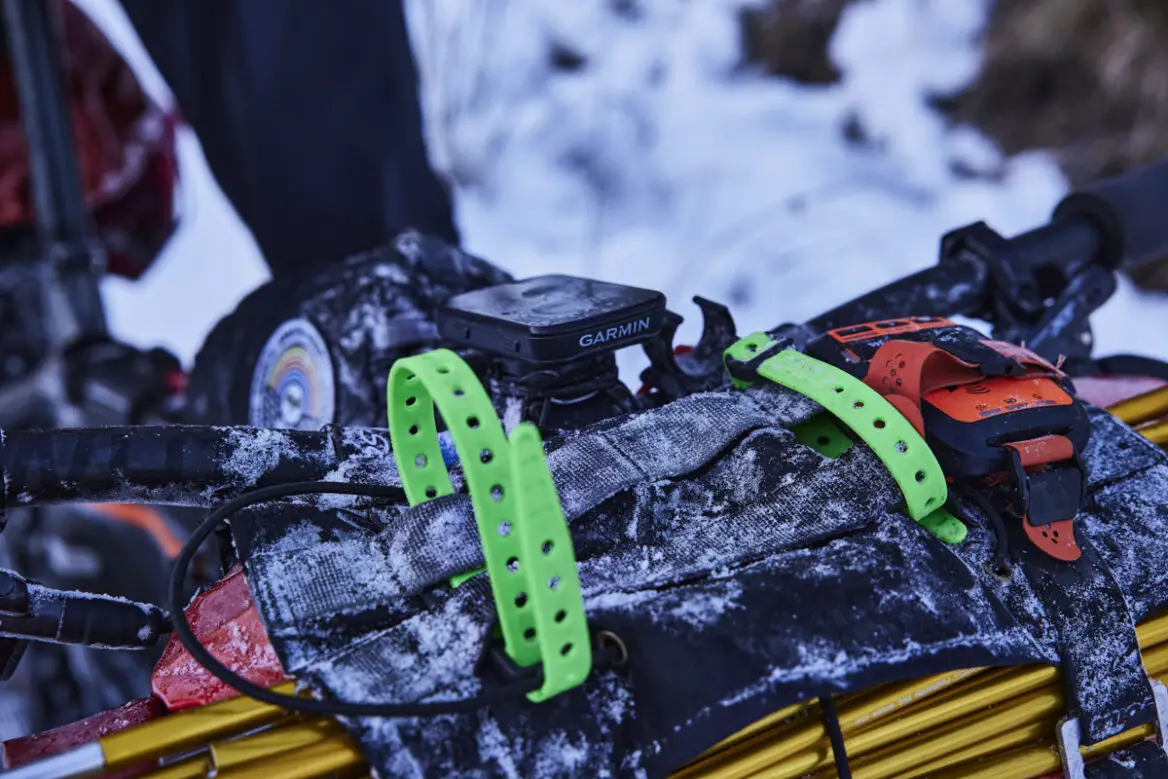
Golly, it’s hard
It’s 9pm, but the days have merged into one. Sitting at the start of Glen Golly in darkness I open my flask, filling a freeze-dried meal. Beyond, at the northernmost point of the Highland Trail, lies the Bealach Horn. Famous among racers, this remote and wild area of rugged terrain and fierce weather patterns is not to be underestimated. From the base of the Glen where I sit eating my lukewarm evening dinner, it rises following the river before breaking off up a steep rib and gaining a long, hagged-peat plateau. After crossing the awkward terrain, it then drops to cross a river, before a short climb up the leg-breaking ascent to go round the Horn. Once rounded, the vista opens to a wide valley providing a fantastic descent to the chilling waters of Loch Stack far below. All in, this section is 17 kilometres long and I make a start after finishing my meal.

I was surprised at how much of the Glen I could ride – horror stories I’d heard sat heavy in my mind and I knew the riding wouldn’t last. As I left the forest and climbed the rib leading to the plateau, the increase in gradient became a battle. Lifting and lunging my bike forwards, it sank into the knee-deep snow. Two steps higher with my feet allowed me to once again repeat the effort. My pace slowed to a crawl and the hours ticked by. I heard that voice in my mind. ‘Stop! Turn back, this is pointless. It’s too hard.’ Listening, but refusing to hear, I knew the adventure I’d hoped for was about to begin.

Gaining the plateau was a relentless battle of physical willpower, made even more challenging by the blizzard that descended on me. Buffeting winds carrying snow hindered the beam of my head torch and I had to resort to following a line on my GPS unit, unable to read the terrain. At one point I swear I only gained a couple of hundred metres in two hours of effort, yet I continued despite knowing the hardship was far from over. Rock-solid in mind, I willed my aching body forwards at a snail’s pace. Lift my bike, lunge forwards, take two steps, and repeat. Lift your bike, lunge forwards, take two steps, and repeat.
At 2am I was gassed. My arms began to cramp with the repeated strain; it had been hours since I had eaten anything besides sweet nonsense. I was about to run out of the water as it had slowly frozen inside my bottles. In the diffused beam of my torch, just to my left, was a boulder. About eight feet in height, it promised a spot to pitch my tent and gain the rest I required, having been on the move for 21 hours. I left my bike standing in the snow and ploughing my way over to the rock I attempted to flatten a ledge for my tent. Spindrift ripped across the top of the boulder carried by the relentless winds. As I got to the end of the patch I was clearing, I turned around – the snow was being replaced as fast as I had cleared it. Stopping wasn’t an option: I had to keep going. I struggled back to my bike, took a deep breath, and carried on following the line on the GPS.
Pushing on
It lifted my morale to be finally dropping to the river. With edges frozen solid it was easily negotiated. However, the steep bank leading from the river posed another problem. I ate some food and braced myself once more for this seemingly endless battle. Three hours later, dawn was showing across the skyline and I could make out the Horn. The snow had stopped falling and the wind had dropped to not much more than the occasional breath – things were looking positive. It’s incredible the energy that first light brings when you’ve ridden through the night. With the growing light I could make out the path, and although unrideable, it made pushing and walking much easier. Rounding the Horn bought views down the valley and of my escape route, but the joy was short-lived. What should have been an epic flowing descent turned into a six-hour push to get down to Loch Stack. At one point on the descent I thought about putting my bike on the fly sheet of my tent and dragging it behind me. This was dismissed after thoughts of trashing my tent, which I would need to continue.
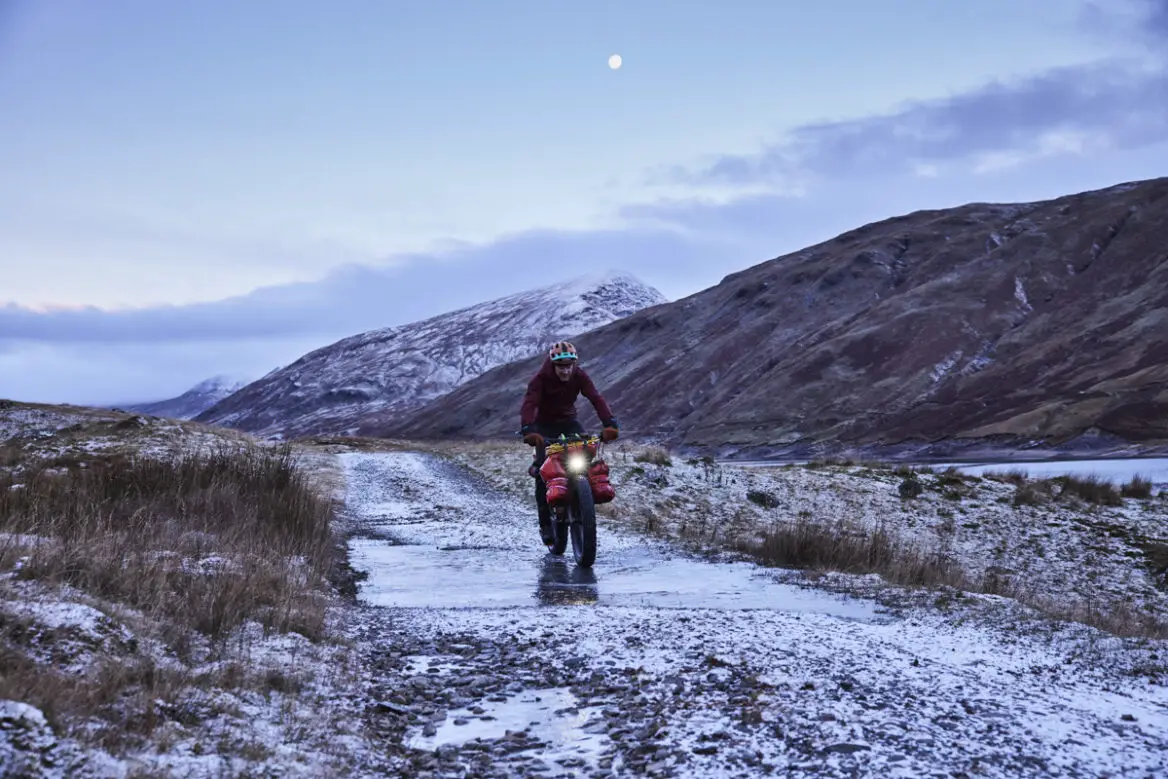
In all, this 17-kilometre section took a massive 18 hours of non-stop effort. Finally riding my bike along the edge of the Loch, the mountains around me lit up in rays of bright sunshine, I stopped and felt the warmth on my face.
Within minutes I was in tears. Running down my cheeks, falling and disappearing into the snow below my tyres, the emotion flowed out of me. My guard down, I embraced my tears, grateful for my strength. I refuelled and was on the move again. Having checked the forecast, with more snow to fall that evening I wanted to get over the next climb and down on the coastal roads to the town of Drumbeg. The changing pressure would bring rising temperatures, and that heavy wet snow we associate with Scotland. Once again digging deeper into my state of exhaustion, I rolled into the limewashed town of Drumbeg at 2am, 42 hours since my last camp.
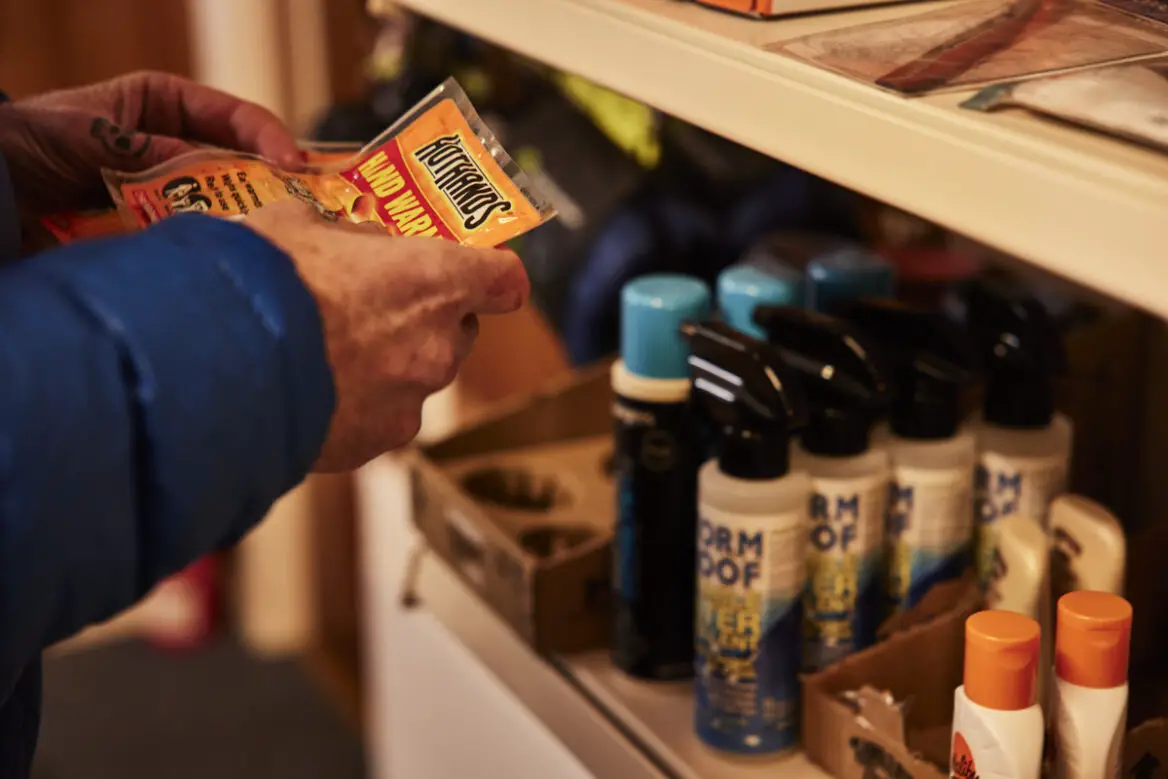
Briefly rested, my morale was high as I rode into Lochinver the following day. I was on the return leg and happy to be heading home, although I’d woken that morning to find I had a problem with my right foot. White in colour, and with discolouration at the tips of my toes, I wasn’t confident they would return to normal in these conditions. Film crew Dave Macfarlane and Paudie Spillane welcomed me as I resupplied at the local shop before we all headed to the Lochinver pie store, famous in these parts. I’d come up with a plan for my toes during the ride that morning: I would buy some hand warmers and stuff them in my boots for the remainder of the trail. After purchasing the warmers and removing my boots, I realised this wasn’t going to be an option. Looking at my feet, it was clear that my ride and record attempt was over. Swollen, and white in colour, with bluish discolouring in my toes, I was beyond the first stages of frostbite. To carry on in this this condition would have fatal consequences for my toes, and I would lose them. Tears of disbelief began to roll down my weathered face. It was over.
Measuring success
Weeks later while nursing my toes back to health, I sit in my home in Mytholmroyd, West Yorkshire, answering the many questions that have come across social media after my failed attempt. People share their opinions of what I did wrong, or how I could have done it better. These wash over me as quickly as the tears rolled off my cheeks in Lochinver. So much effort had gone into getting to that point, so much struggle, yet for me there was no option to carry on.
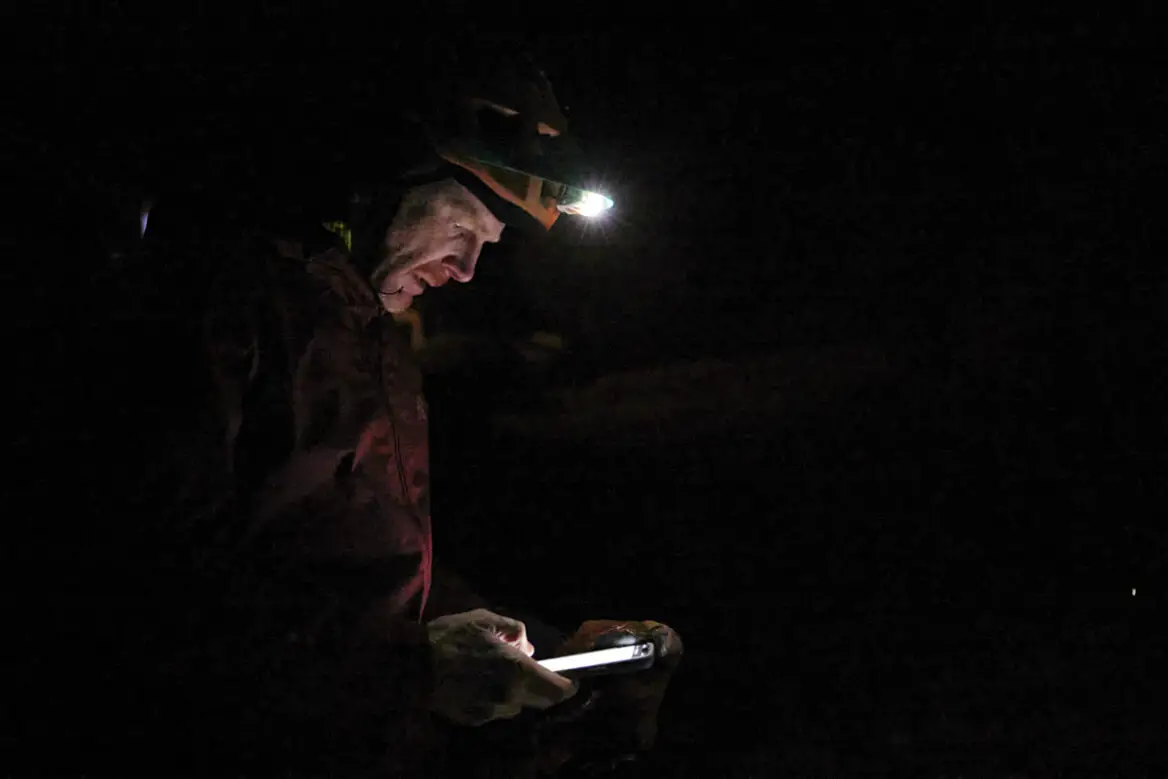
With years of experience in the Scottish mountains of both winter mixed climbing and cycling adventures, I found it easy to walk away. Even with the pressure of a film crew, sponsors that might be lost and, of course, dealing with people’s opinions, these don’t matter when your safety is on the line. In what turned out to be the coldest spell of weather this country has seen in over a decade, dropping to -18°C, the dangers were real. I was asked if I would have preferred to fail in those conditions, or have succeeded in milder ones? Which begs the question, what is success? We live in a world where the finish line and medals mark success – having won my fair share of medals, maybe that gives me the perspective to look beyond the chunks of metal with their colourful ribbons and find a greater meaning.
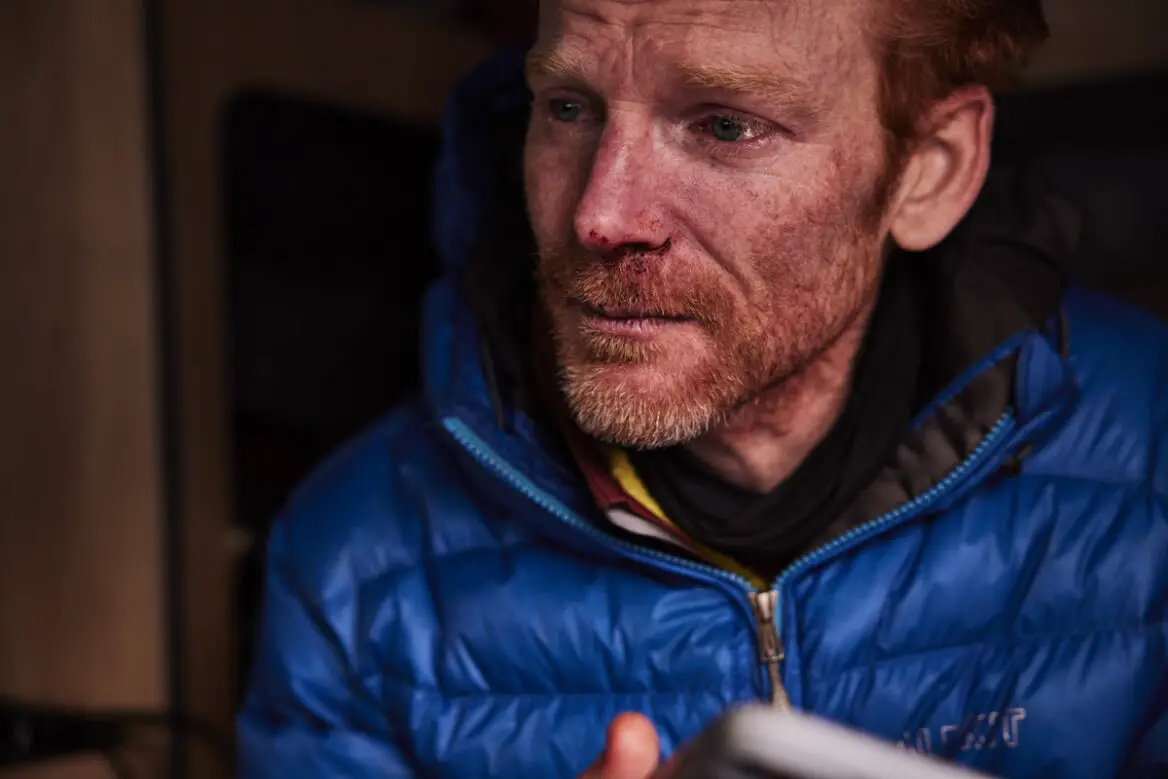
Success for me isn’t winning a medal, a headline in a newspaper, or gaining the summit of a mountain. Success lies in the lesson I learn throughout the journey. What good is a medal if I have learnt nothing from the process? I could gift you a Paralympic gold medal, but after the initial marvel at your new prize, you would come to realise it’s worthless, because of the ease with which it was gained. The value in the medal is the struggle, the going beyond yourself to achieve it.
Setting off, I had no idea what was in store for me on the Highland Trail. During my four and a half days I had a wild adventure. I found another gear, both physically and mentally, that I never knew I had. I found peace and joy in the struggle, and have become a stronger person for the experiences. Is that not success?
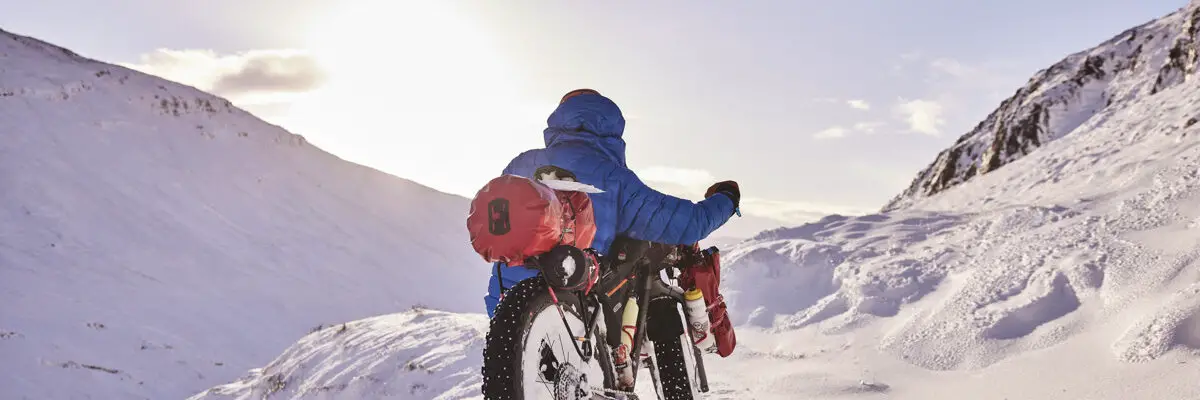

You must be logged in to reply to this topic.